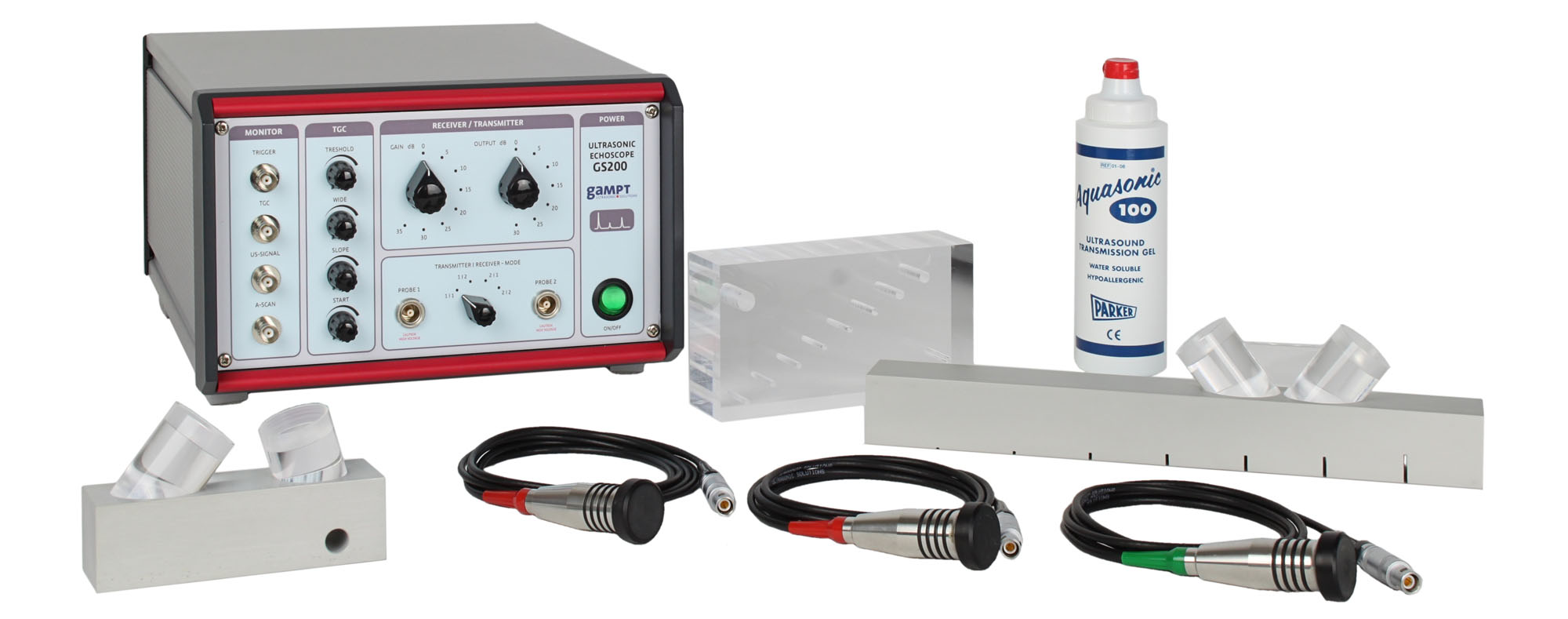Article No. VK-19003
Ultrasound in Material Science and Engineering (Ultrasound Experimental Set 3)
Non-destructive testing (NDT) by means of some of the most common ultrasound testing methods, such as the pulse-echo method and the through-transmission method, angle beam testing and the TOFD procedure using different material samples
One main field of application of ultrasound is the non-destructive testing (NDT). Ultrasound testing has here become established as a standard procedure for the analysis of material faults, such as cracks, cavities, gas bubbles and inhomogeneities, in an extremely wide variety of materials, such as metals, plastics or composites. A large number of methods have been developed for performing the individual testing tasks.With this experimental set, some of the most common ultrasound testing methods, such as e.g. the pulse echo method and the through-transmission method, angle beam testing and the TOFD procedure, are explained and applied to different material samples.Based on the knowledge of physical characteristics of ultrasound waves (e.g. sound velocity, acoustic attenuation, reflection, diffraction, scattering), experiments are performed on special test blocks, for the adjustment of ultrasound testing devices such as the production of a DGS diagram (distance gain size diagram) or the calibration of an angle beam probe. Furthermore, the performance of different test methods is tested for different types of faults and quantitative measurements are carried out, such as e.g. determining crack depths in aluminium samples.By expanding the set with other material samples and accessories from our range, the experiments can be extended to more special testing methods using shear and surface acoustic waves or guided waves (Lamb waves).The experiments and measurements with this set make it possible to offer the students a clear introduction into the problems of ultrasound testing and are therefore interesting for training in almost all engineering fields.
| Ord.no. | Description |
|---|---|
| 10400 | Ultrasonic echoscope GS200 |
| 10152 | 2 ultrasonic probes 2 MHz |
| 10154 | Ultrasonic probe 4 MHz |
| 10201 | Test block (transparent) |
| 10233 | Angle beam wedge 17° |
| 10234 | Angle beam wedge 38° |
| 10237 | Transceiver delay line (TOFD) |
| 10240 | Test block for angle beam probe |
| 10241 | Crack depth test block |
| 70200 | Ultrasonic gel |
| Ord.no. | Description | for Experiment | |
|---|---|---|---|
| 10218 | Shear wave set | PHY04 | Acoustic attenuation in liquids |
| 10208 | Acoustic impedance samples | PHY21 | Reflexion and transmission at boundaries |
| 10242 | Discontinuity test block | IND08 | Detection of discontinuities |
